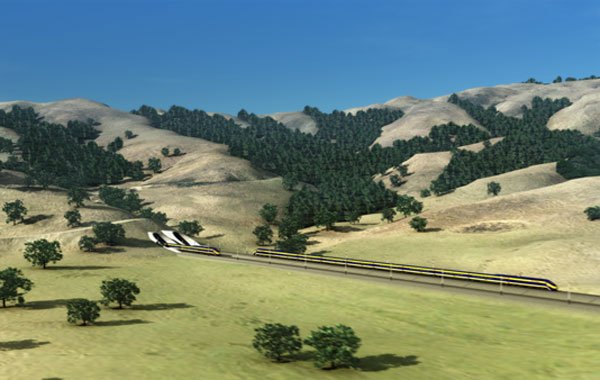One question was prevalent during the Gilroy City Council’s
first look at a $200,000 visioning project meant to examine two
possible high-speed rail station locations in Gilroy: Would a
station built east of U.S. Highway 101 destroy downtown?
One question was prevalent during the Gilroy City Council’s first look at a $200,000 visioning project meant to examine two possible high-speed rail station locations in Gilroy: Would a station built east of U.S. Highway 101 destroy downtown?
The project, run by city-hired Berkeley-based Design, Community and Environment, didn’t offer any predictions. Council members, however, some smarting from the update’s lack of depth, gave their own answers during Tuesday night’s report at City Hall.
“You can kiss downtown goodbye,” Councilman Peter Arellano said.
For the first time since the visioning project kicked off in early May, Council members were briefed on residents’ greatest concerns regarding the 800-mile, $45 billion project, as well as what they believed the future held for the areas surrounding the stations.
But Council members were critical of the project for isolating the two station options and not showing the consequences one site might face if selected, specifically what would happen to downtown if the station is built east of Gilroy.
DC&E’s Bruce Brubaker, though, said that’s not what the city hired the firm to do, and that its task was to parallel the station options, not to sway in picking a preferred site.
Councilman Perry Woodward said DC&E still couldn’t ignore the request.
“You can’t put on blinders,” he said. Woodward described the visioning project’s analysis so far as “superficial.”
City Administrator Tom Haglund urged the Council to be patient with updates from community workshops, which he called “one level above crayons on page.”
“There’s going to be loads of further refinement along the way,” Haglund said.
The visioning project is funded by $50,000 from the City of GIlroy and a $150,000 Valley Transportation Authority grant.
“For me, if they are really doing a weighing, they’ve got to dig in quite a bit deeper for it to be meaningful,” Woodward said.
Woodward said residents’ vision for a downtown station, which included residential and retail structures, would create a dense economic base.
“The same thing is true, of course, if you put it out east of town,” Woodward said. “It’s going to be an economic center of gravity. We all kind of know intuitively that that’s going to happen.”
A station east of Gilroy, however, which residents think could include a hotel or convention center, could effectively kill off downtown, Woodward said.
“I’m worried about that,” he said. “I’m afraid that putting a station east of town is going to have a long-term negative impact on the community.”
Councilman Bob Dillon, a vocal critic of the high-speed rail project, said the visioning project needed to account for residents who didn’t want the project at all.
“What I did not like about it was that none of the choices were ‘We don’t want this here,’ and I believe those should have been recorded,” Dillon said.
Brubaker, the associate from DC&E’s planning center, said several residents did mention during workshops they’d prefer the rail line avoid Gilroy altogether.
Brubaker said his response to that was, “Duly noted, however the train is being planned and let’s respond.”
Dillon said if he had to choose, he’d likely prefer the east station.
“I really see both those stations as a nightmare. If someone put a gun to my head. I guess I’d pick the 660,” Dillon said. “If that train goes downtown it will be the death of Gilroy.”
Councilman Peter Leroe-Munoz called Tuesday’s update “a good start.” Even with its early bumps, he said the visioning process would help the Council select a preferred station location.
“I think it ultimately will. We’re not done with it by any means,” Leroe-Muñoz said. “But we still have work to do on that.”
var docstoc_docid=”86175686″;var docstoc_title=”Study Session 1″;var docstoc_urltitle=”Study Session 1″; Study Session 1 –














